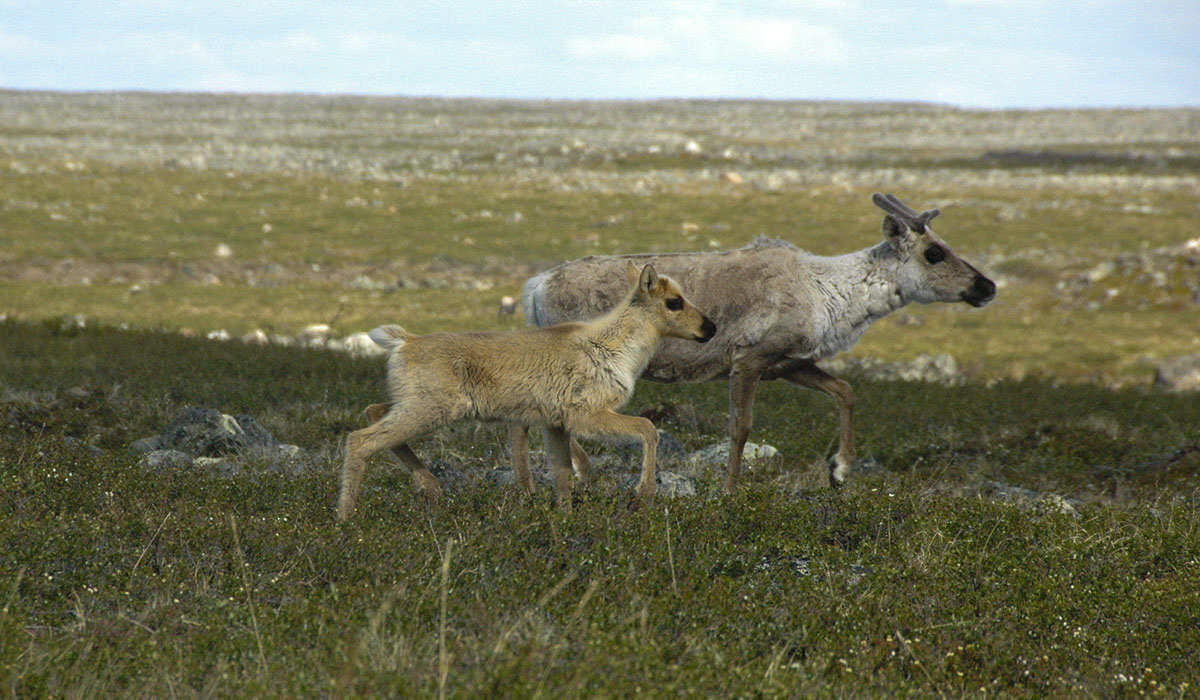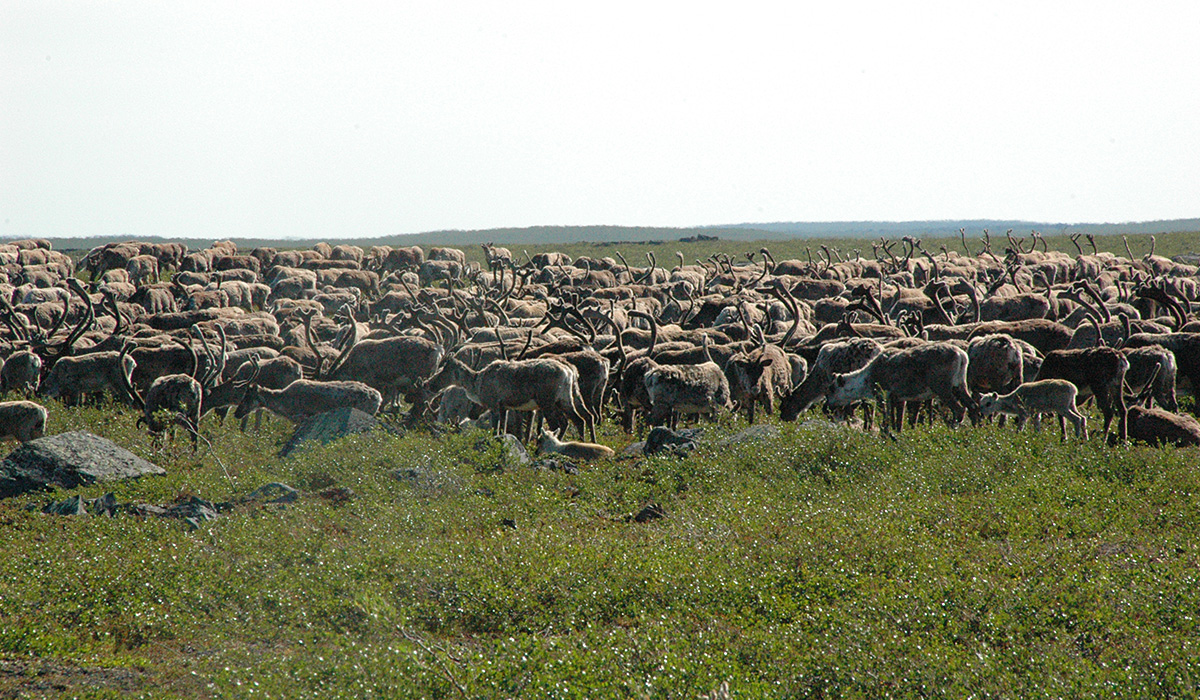The Annual Caribou Cycle
The areas and habitats used by Beverly and Qamanirjuaq caribou can vary from year to year due to weather, snow melt, availability of food, predator avoidance and other factors. Generally, though, the herds cycle of seasonal movements is as follows.
To the Calving Grounds
In spring, the cows and yearlings migrate north to the calving grounds, followed by non-pregnant cows and young bulls. Adult bulls follow up to a month later. While traditional calving grounds are the general areas the caribou have used for calving, specific areas used for calving vary from year to year.
After calving in early to mid-June the caribou begin to form larger groups, numbering in the many thousands. This behaviour helps protect the herds from insect harassment and predators.

After calving in early to mid-June the caribou begin to form larger groups, numbering in the many thousands. This behaviour helps protect the herds from insect harassment and predators.

Back to the Forest
After calving in early to mid-June the caribou begin to form larger groups, numbering in the many thousands. This behaviour helps protect the herds from insect harassment and predators.
Beginning at the end of July, the caribou rapidly start to migrate back to the tree line, and by August, the caribou disperse in response to warble and nose bot flies. In some years, a migration back towards the calving grounds takes place. This fall migration from tundra to taiga varies from October to December. The rut occurs in late October, with mature bulls separating from the cow-calf-young bull groups soon after.
By November, most of the herds are in the forest once again, although they continue to travel rapidly until snow deepens to 50 cm or more in February and March.
Most caribou from the Beverly and Qamanirjuaq herds have traditionally wintered in the subarctic forests of the Northwest Territories (NWT), Saskatchewan and Manitoba. In recent years, however, few caribou have wintered in northern Saskatchewan or the southern NWT.